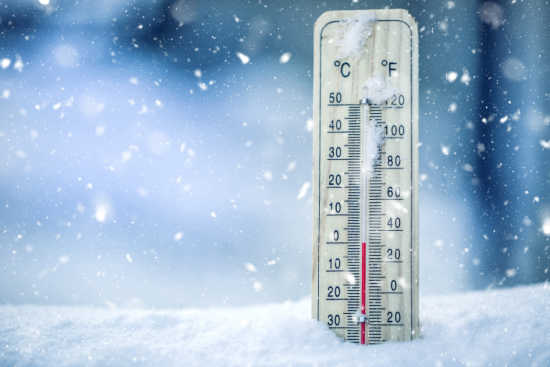Whenever temperatures drop decidedly below normal and as wind speed increases, heat can leave your body more rapidly. These weather-related conditions may lead to serious health problems. The reason being is that our bodies are not built to withstand long bouts of extreme weather. Lower body temperature can cause your heart, nervous system, and other organs to enter a state of shock, putting a person at risk of a heart attack, respiratory system failure, and possibly death.
Many overestimate their abilities to withstand winter-related emergencies and fail to adequately prepare, thus leaving themselves exposed. The following are the five most-likely winter emergencies and some tips and resources to help you prepare.
Get prepared for the unexpected with this best-selling preparedness manual
Cold-related health problems, including frostbite and hypothermia.
Here is a great article on how to avoid cold exposure and some tips on what to avoid. As well, knowing the type of gear to have on hand can make all the difference in the world. Here are 10 first-aid supplies to have on hand to assist with hypothermia exposure and some tips on winterizing your bug-out bag to prevent this medical issue. As well, with any of the following winter emergencies, never underestimate the power of having the right type of winter clothes to keep your core warm. Layering clothing works by trapping warm air created by your own body heat in between the many layers of clothing. That trapped warm air acts like a layer of insulation for your body. Especially in winter, because that’s when it’s much colder, keeping your core warm is a key to good health, because this is the area that generates heat for your vital organs. Those organs need your body heat to function properly.
Household fires and carbon monoxide poisoning from space heaters and fireplaces.
This silent killer claims the lives of hundreds of unsuspecting victims each year. When too much carbon monoxide is in the air you’re breathing, your body replaces the oxygen in your red blood cells with carbon monoxide. This prevents oxygen from reaching your tissues and organs. This can occur from burning fuels in the home from not properly cleaning your chimney, furnaces, dryers, water heaters, space heaters, and generators. Keep these safety tips in mind when using a generator. You can read more about the dangers of carbon monoxide here. The best way to prevent this is to have carbon monoxide alarms in the home and to periodically check and replace the batteries of your carbon monoxide alarms each year.
Unsafe driving conditions from icy roads.
Overestimating your winter driving abilities can land you into trouble – quick! Or, Say your car malfunctions, get stuck, or crashes in a remote area during a blizzard. If there’s nothing you can do to get the vehicle moving again, you have to make the tough decision of whether to stay in the vehicle or to leave and find help (it should go without saying that in this hypothetical scenario, you don’t have a cell phone signal). As well, whiteout conditions can be dangerous if not deadly. With cold weather around the corner, we’re going to cover some basic information on what you need to do when driving in these winter conditions. If you find yourself stranded in your car, here are a few survival tips to help.
Power failures and loss of communication.
When the power fails during winter storms, having the necessary supplies and a well-thought-out plan can keep you staying warm. Winter power outages happen for a number of reasons, including a severe snowstorm. If that happens, you’ll want some things to help you get through. Backup heating sources are a must in this emergency situation, flashlights, and lanterns, as well as off-the-grid supplies like water, just-add-water meals, or supplies based on these 25 pantry must-haves, will help you through this emergency.
Floods after the snow and ice melt.
When winter snows begin to thaw, and early spring storms arrive, floods can be prevalent in certain areas. Be aware of flood hazards no matter where you live, but especially if you live in a low-lying area, near water, or downstream from a dam. Even very small streams, gullies, creeks, culverts, dry stream beds, or low-lying ground that appear harmless in dry weather can flood. Every state is at risk of this hazard.
Learn about this emergency, how to prepare for it, if you find yourself in a flash flood while you’re driving, and how to sandbag your home from flooding.
Additional Resources:
Frostbite: How To Survive Winter’s Unrelenting Brutality
What To Square Away For The Upcoming Winter
Staying Hydrated During The Winter Months Is A Key To Good Health
This article was originally published at Ready Nutrition™ on December 7th, 2021







